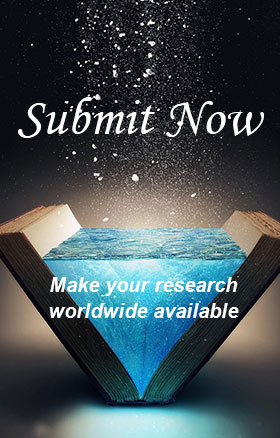The Developing a Pictured Story Book as Emotional Intelligence for Low Grade Elementary School Students
Abstract
Keywords
Full Text:
PDFReferences
Anggara, Mercia Berlin. (2014). Perancangan Buku Cerita Bergambar Interaktif
Pendidikan Karaker Untuk Anak Usia 4-6 Tahun. Jurnal DKV.
Emzir. (2010). Metodologi Penelitian Pendidikan:Kuantitatif dan Kualitatif. Jakarta:
Rajawali Pers.
Goleman, Daniel. (2003). Kecerdasan Emosi untuk Mencapai Puncak Prestasi.
Terjemahan: Alex Tri Kantjono, Jakarta: Gramedia Pustaka Utama.
Hanifah, T. U. (2014). Pemanfaatan Media Pop-Up Book Berbasis Tematik untuk Meningkatkan Kecerdasan Verbal-Linguistik Anak Usia 4-5 Tahun (Studi Eksperimen di TK Negeri Pembina Bulu Temanggung). BELIA: Early Childhood Education Papers, 3(2).
Hayati, N. (2008). Menstimulasi Kecerdasan Emosional Anak Sejak Usia Dini. FONDASIA, 1(9).
Indarwati, Agustin. (2012). Upaya Meningkatkan Kemampuan Berbahasa Lisan
Dengan Menggunakan Media Cerita Bergambar Pada Anak Kelompok B Di Tk Aisyiyah 44 Tandes Lor – Kota Surabaya.
Kawuryan, Sekar. (2011). Karakteristik Siswa Sd Kelas Rendah Dan
Pembelajarannya. PPSD FIP UNJ.
Lestari, M. A., Erlianti, M., & Permana, A. (2017). Efektivitas Penggunaan Media Buku Cerita Bergambar dalam Penanaman nilai-nilai Moral Siswa SD Kelas Rendah. Pedagogi: Jurnal Penelitian Pendidikan, 4(2).
Mulyatiningsih, E. (2012). Metode Penelitian Terapan Bidang Pendidikan. Yogyakarta: Alfabeta.
Nurhaida, I., Hariyanto, S. P., Junaidi, A., & Syah, P. (2007). Merancang Media Hiburan Buku Cergam Menjadi Media Belajar untuk Alat Bantu Komunikasi. Mediator: Jurnal Komunikasi, 8(1), 51-64.
Petrides, K. V., Sangareau, Y., Furnham, A., & Frederickson, N. (2006). Trait emotional intelligence and children's peer relations at school. Social Development, 15(3), 537-547.
Poerwanti, E. (2005). Memahami Pertumbuhan Kecerdasan Intelektual dan
Kecerdasan Emosional Anak untuk Kepentingan Pendidikan. www.malang.ac.id/jurnal/fip/sd/-8k.
Pratiwi, N. L. M. T. (2017). Pengembangan buku cerita anak dengan menginsersi budaya lokal dalam tema kegemaranku untuk kelas i sekolah dasar. Jurnal Imiah Pendidikan dan Pembelajaran, 1(3).
Prima, E. (2017). Pengembangan Kecerdasan Emosional Anak Melalui Game DOTA (Defence of The Ancients). KOMUNIKA: Jurnal Dakwah dan Komunikasi, 11(1), 149-165.
Rosari, Y. P. P., Agung, A. A. G., Ambara, D. P., & Psi, S. (2014). Penarapan Metode Bercerita Berbantuan Media Buku Cerita Bergambar Untuk Meningkatkan Perilaku Moral. Jurnal Pendidikan Anak Usia Dini Undiksha, 2(1).
Rahmatika, A. N. (2015). Pengembangan Media Buku Bergambar Perilaku Asertif Untuk Siswa Kelas IV Sekolah Dasar. Jurnal Mahasiswa Bimbingan Konseling UNESA, 5(3).
Sa’diyah, R. (2013). Melatih Kecerdasan Emosi Anak Usia Dini. INSANIA: Jurnal Pemikiran Alternatif Kependidikan, 18(1), 117-134.
Santoso, T., Harpawati, T., & Prihartanti, N. (2009). Mendidik Tanpa Menggurui melalui Dongeng Anak. Gelar: Jurnal Seni Budaya, 7(2).
Sukmadinata, N. S. (2012). Metode Penelitian Pendidikan, PT Remaja Rosdakarya.
DOI: https://doi.org/10.29103/ijevs.v2i1.1962
 Article Metrics
Article Metrics
 Abstract Views : 447 times
Abstract Views : 447 times
Refbacks
- There are currently no refbacks.
Copyright (c) 2020 Rima Hazrati, Susi Fitri, RA. Murti Kusuma Wirasti





















 International Journal for Educational and Vocational Studies (IJEVS)
International Journal for Educational and Vocational Studies (IJEVS)